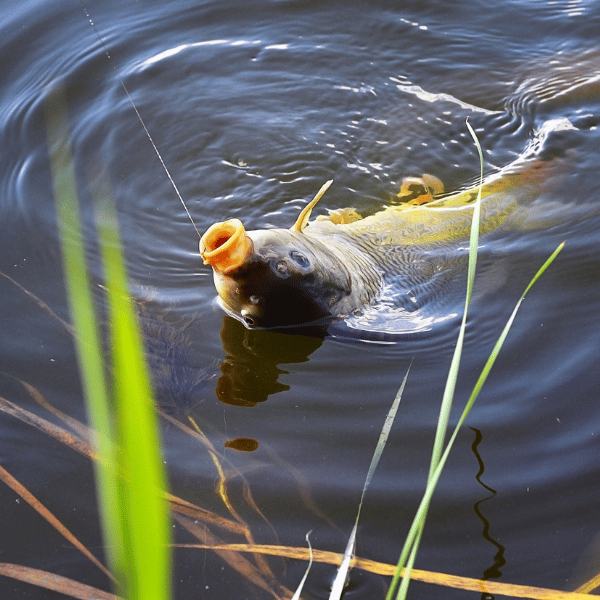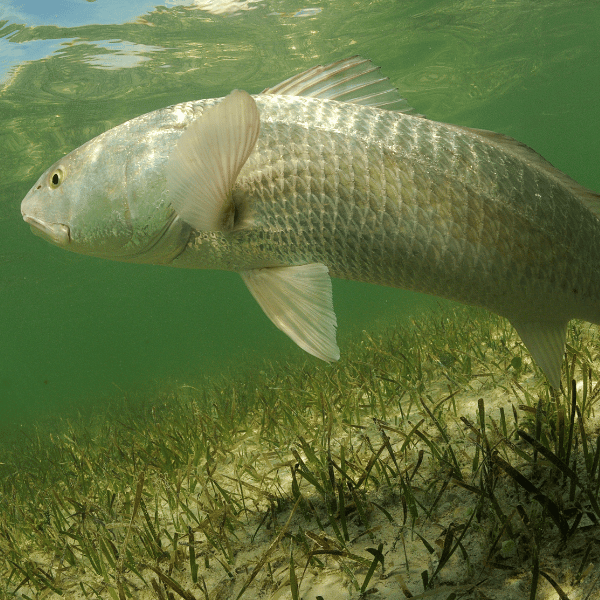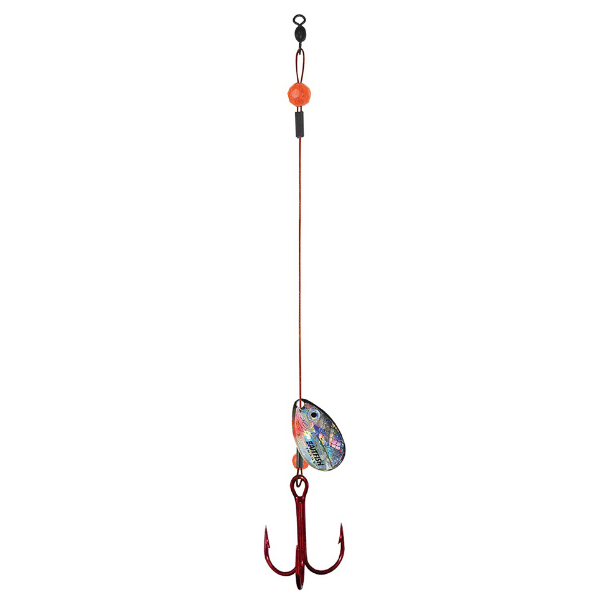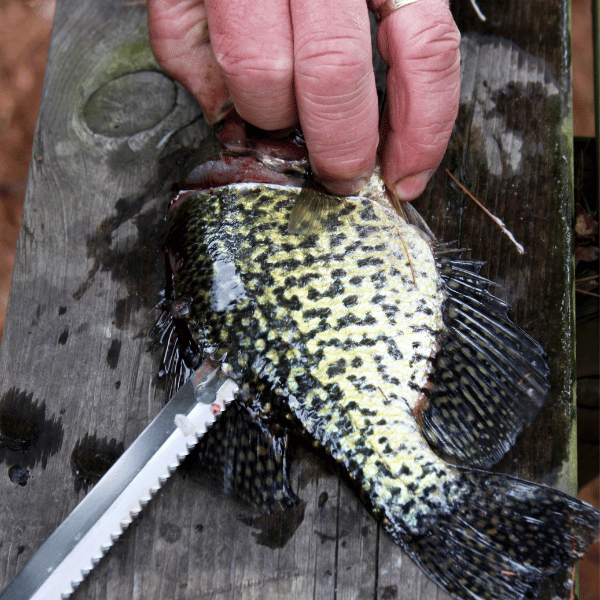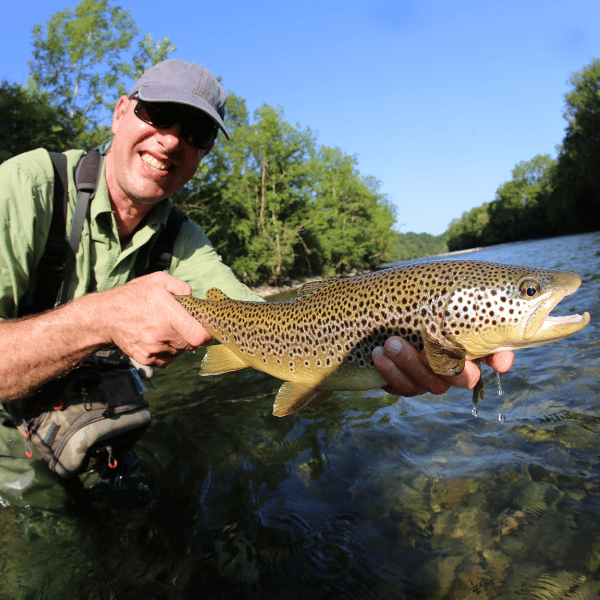How to Ice Fish for Perch
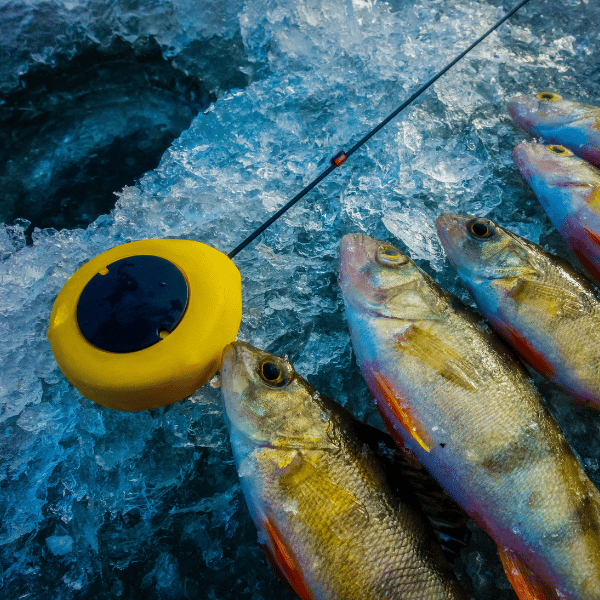
Ice fishing for perch is one of my favorite types of ice fishing and learning how to ice fish for perch can be one of the easiest ways to start ice fishing, if you know the basics.
In this article, we will cover when to fish for perch and how deep to ice fish for perch, as well as what type of bait to use and how to use it. We will also cover several other beginner perch ice fishing tips to get you jump-started this season.
Contents
Best Time of Day to Ice Fish for Perch
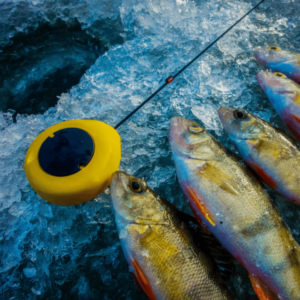
It’s important to go ice fishing for perch at the right time of day. This will have a large effect on how many perch you’ll be able to catch.
The best time to ice fish for perch is when they are especially active around sunrise and sunset. However, perch remain active at all times of the day, so you can ice fish for perch at any time of day.
If you want to have the best opportunity to catch perch while ice fishing, you will need to plan accordingly to fish early in the morning or just as the sun starts to set. Yet, I would not worry if you need to fish in the afternoon after work as there will still be plenty of perch on the move, even if you are doing some night perch ice fishing.
How Deep Perch Go in the Winter
A general rule for what depth for ice fishing perch is that perch will travel to some of the deepest spots in the lake seeking warmer water.
In smaller lakes, big perch normally hang out in the water that is at least 30 feet deep during winter. This is considerably deeper than perch go in the summer. In large lakes, such as the great lakes, perch can be found in even deeper water up to 70 to 80 feet deep.
How to Attract Perch When Ice Fishing
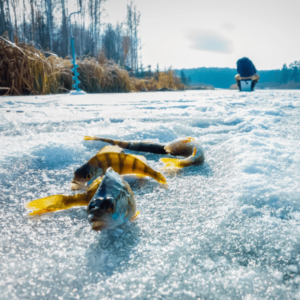
Perch are some of the easiest fish to catch when ice fishing, but you may be able to benefit from tips and tricks that increase your chances of attracting them.
Here are some step by step instructions that you can use to reliably attract perch:
- Drill a hole.
- Send a large spoon down to the floor of the body of water.
- Bounce the spoon up and down to rustle up the dirt. This will make the fish think that another fish is feeding and grab the attention of the perch.
- Slowly raise the spoon up. This should be done to direct the perch to swim higher up to the surface.
- Send down your bait. Bob the bait up and down in small, subtle jerky movements. This is referred to as jigging.
- Wait for the perch to bite. If the fish bites and releases, try jiggling again to entice the fish to bite again.
Since perch move in schools, once you get one bite, you’re likely to get many more.
How you jig the bait when it’s in the ice is important. You should not jerk your fishing rod violently. The movements should be quick and subtle.
The key is to move it in a way that mimics the movements of a small fish or another invertebrate. If you jig the bait wildly, you could deter the perch from approaching.
Best Bait to Catch Perch Ice Fishing
Perch are not very picky eaters – they will eat almost anything, but they do have some preferred food options. There are several bait options that are perfect for fishing for perch, both live bait and artificial bait. Let’s take a deep look at the best bait in the sections below:
Live Bait
Of all of the live bait, minnows are the most commonly used bait option for perch. Minnows that are about 1 to 2 inches in length are the perfect size to use as bait. Perch can’t seem to get enough of these. Make sure that you don’t use large minnows as bait, as perch’s mouths are really small.
If they anticipate that the meal is going to be too large to fit in its mouth, it may ignore the bait and move along.
Some other great options for live bait are listed below:
- Crayfish
- Softshells
- Insect larvae
- Grubs
- Worms
When it comes to ice fishing for perch, it’s great to bring a variety of live bait, as perch can be a little finicky on occasion. If you bring a selection of colorful, lively bait, you’re sure to attract the attention of some perch.
Artificial Bait
You don’t have to handle live bait to catch perch. You can go the easier route with some artificial bait.
The most popular artificial bait that you’ll find for perch ice fishing is a jig, and soft plastic tipped waxies. This bait is ideal if you prefer artificial bait, and many swear that it brings lots of perch.
Some other artificial baits you can use are:
- A perch spoon dropper chain
- Northland Fishing Tackle Buck-Shot Rattle Spoon
- Lindy Rattl’n Flyer Spoon
What Color Ice Fishing Bait Do Perch Like?
Color is a common concern when it comes to choosing bait for perch. For the most part, perch like yellow bait. One perch may react favorably to the yellow bait, while another may ignore it entirely.
It is best to start with yellow, then switch to other vibrant colors such as orange, red, pink, or chartreuse (green).
How to Locate Perch Ice Fishing
If you want to take the guesswork out of ice fishing for perch, you’ll need to equip yourself with a couple of items.
Portable Sonar
First, using a portable sonar will help you determine how deep the water is and whether there are fish in the area. For less than $100, you can secure a piece of equipment that will make your fishing expedition much more efficient.
The great thing about having a fish finder in your ice fishing arsenal is the fact that you won’t waste any time waiting for fish to bite in an area where there are no fish.
Once you find an area that for sure has fish, you can drill a hole in the ice and cast out.
GPS
GPS is another avenue you can use to locate perch. If this is not your first time ice fishing, chances are that you’ve found an area or two where you’ve been lucky to find a load of fish. A GPS can be used to tag those locations so that you can circle back and try to find fish there again.
Search in Flats
Perch follow the food, and this drives their behavior. So, wherever the perch are able to find an easy meal, that’s where you’ll be able to find them. Flats are large, expansive areas in a lake that don’t have many irregularities.
Another promising place to look is wherever there is in deep mudflats, as this is where perch feed on worms and insects. If you can find where the perch feed, you’ll have no problem catching them.
Pro Tip:
Don’t drill holes close together when ice fishing for perch. Use your sonar gadget to find a promising spot, then move between 100 to 200 feet away from that first hole. If you don’t space out your holes, you may not cover enough ground, and this diminishes your chances of locating perch.
